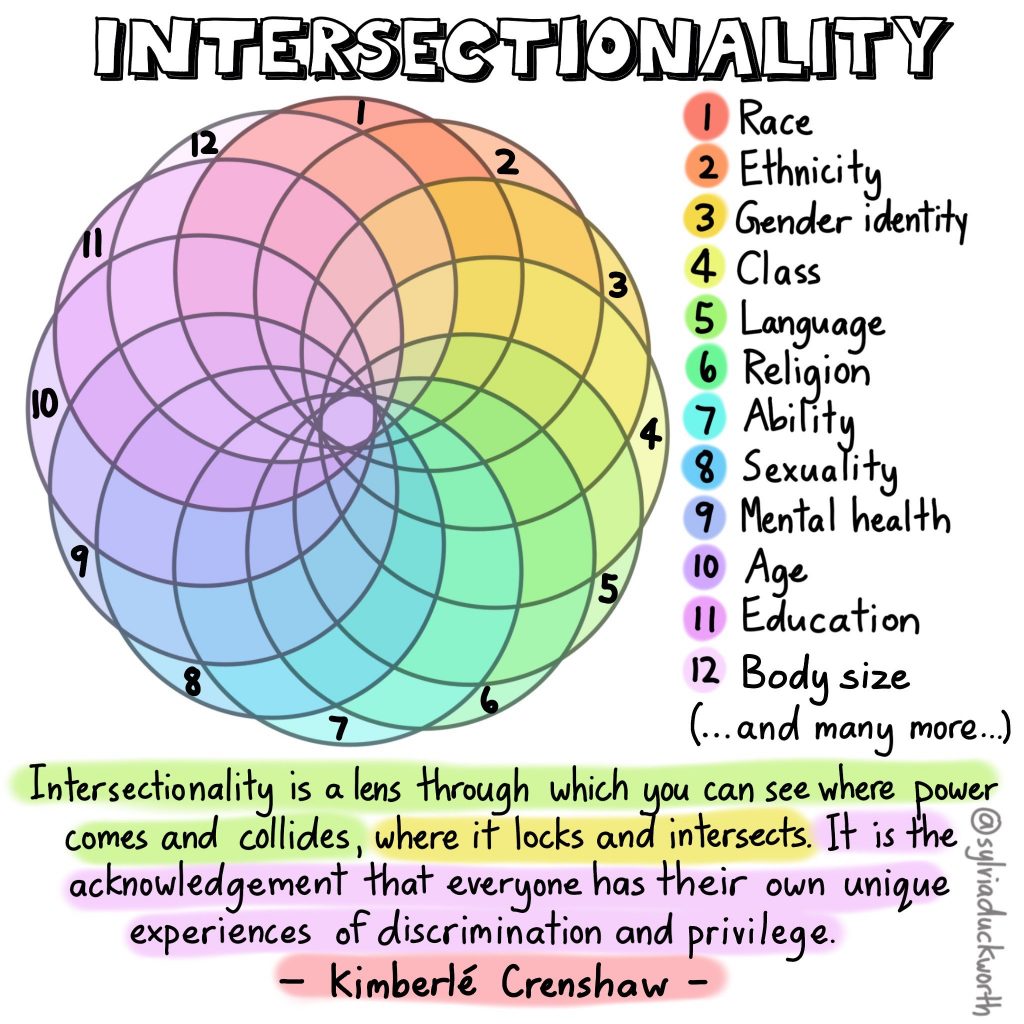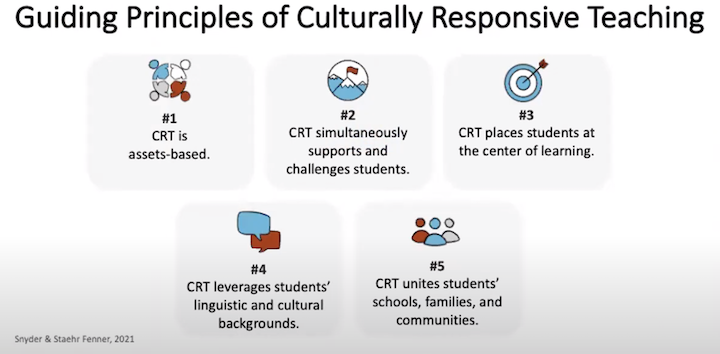Teaching at the Intersections by Monita Bell
5 Tips for Being an Ally by @chescaleigh on YouTube
Monita Bell beings the conversation of being an advocate for our students. She describes the intersectional lens as "Intersectionality refers to the social, economic and political ways in which identity-based systems of oppression and privilege connect, overlap and influence one another" (Bell). She uses qualitative data and insight from law professor Kimberlé Crenshaw to demonstrate the need to look at the whole child in order to better understand them and to eventually educate them. I really like this because it reminds me of the theorist Carl Rogers, who saw the whole person beyond just their physical and cognitive abilities. The only way to reach that is through self discovery and being in tune with your individuality. As educators we must foster this in our students, and give them a safe environment to exist beyond test scores and academic achievements.
Bell points out that we must bring these ideas of intersectionality into our curriculum, specifically by showing the relationship between power and privilege, "In the classroom, educators can use an intersectional lens to better relate to and affirm all students—like Nicole—and to help young people understand the relationship between power and privilege through the curriculum" (Bell). Being a student after 9/11 I noticed a more conscientious effort on my teachers to bring up current issues during lectures in high school. It didn't seem like it was very intentional but more of everyone trying to navigate the new U.S. Now, 20+ years later I see a greater shift in this that is more conscious and geared at bringing systems of oppressions down through education. In my own experience, I have been certified to teach English Language Arts; however, 3 years ago our curriculum changed in which I now teach 2 units of humanities. One of the units in humanities is about Civics. I teach this unit last, and right after doing Modern American Historical Fiction unit using Flygirl by Sherri L. Smith. In Unit 3, we use Ida Mae's character to explore being black and a women in 1940's WW2 United States. As a class we talk about marginalized groups and how the antagonist in the story are "white men in power", specifically the government and their prejudice legislation at the time coupled with the expectations of society. This leads beautifully into Civics and Our Rights, where students have to pick the most important right/responsibility an American can have. These 2 units makes adding intersectionality into my curriculum natural and safe, where everyone can learn, have opinions, and accept others' perspectives.
"5 Tips for Being an Ally" is a great video that directly connects Monita Bell's idea of intersectionality in the classroom and how to put this theory into practice. The first tip is to understand your privilege. For both units I continually mention my privilege and power of being born in the U.S., educated up to post-secondary, being white, and speak fluent English, but I also emphasis things like my age, marital status, daughter of an immigrant, and gender and how sometimes these things can lower my power status. This connects Allan G. Johnson and the diversity wheel above. Another tip is to research what is important to the community you teach to and your students live in. It is okay to not be aware, but it is not helpful to your practice, relationships, and growth if your are not willing to investigate. I think my classmate Brendon Tran said it best in his last post, "We may not be experts, but it is the time we take to get to know them, allow them to get to know us, and create an environment/space that truly uplifts all differences" (Tran).

.jpg)


Hi Kelly! Thank you for the inclusion of the colorful intersectionality picture. I think that was a great visual representation of the article we read this week! I also connected the intersectionality article with Johnson's diversity wheel. Thank you for a thorough and thoughtful post as always!
ReplyDeleteHi Kelly! Great job on your post and great connections to the Johnson reading and theorist Carl Rogers. I appreciate how you always tie these readings back to your work in the classroom teaching students about history and current events!
ReplyDeleteKelly, thank you for making the connection between Monica Bell's intersectionality and the videos which highlight theory into practice. I believe that you being upfront to acknowledge your power and privilege certainly helps your students relate to you. Having a relationship with students builds trust which is essential to learning.
ReplyDeleteKelly,
ReplyDeleteI really like the image you chose to represent intersectionality. There are so many things that alter our power and how we are viewed in different situations. This is the perfect depiction. I also loved that you were able to relate a quote from Brendon's blog. Thank you for your post!